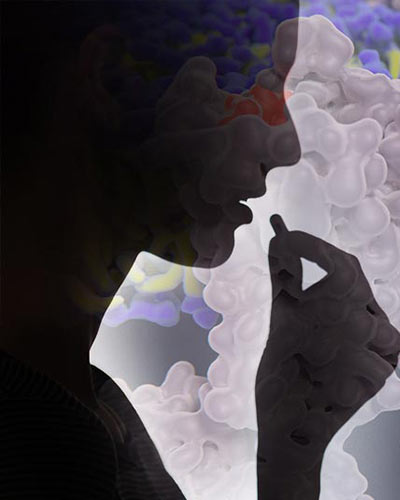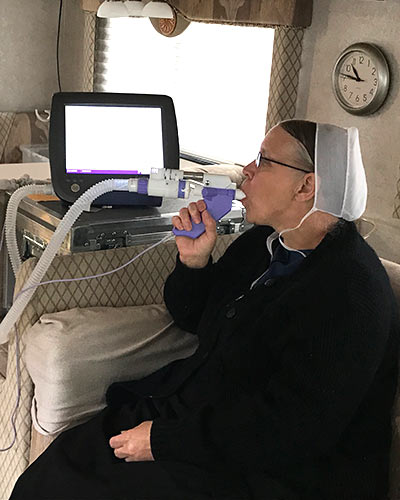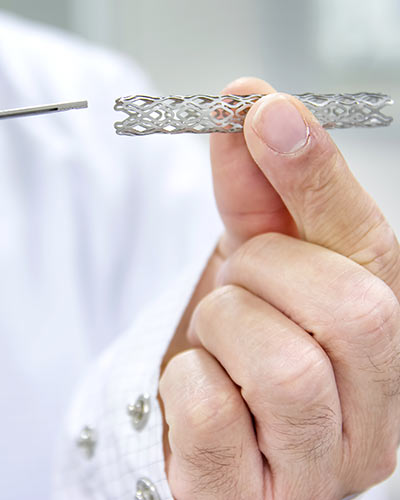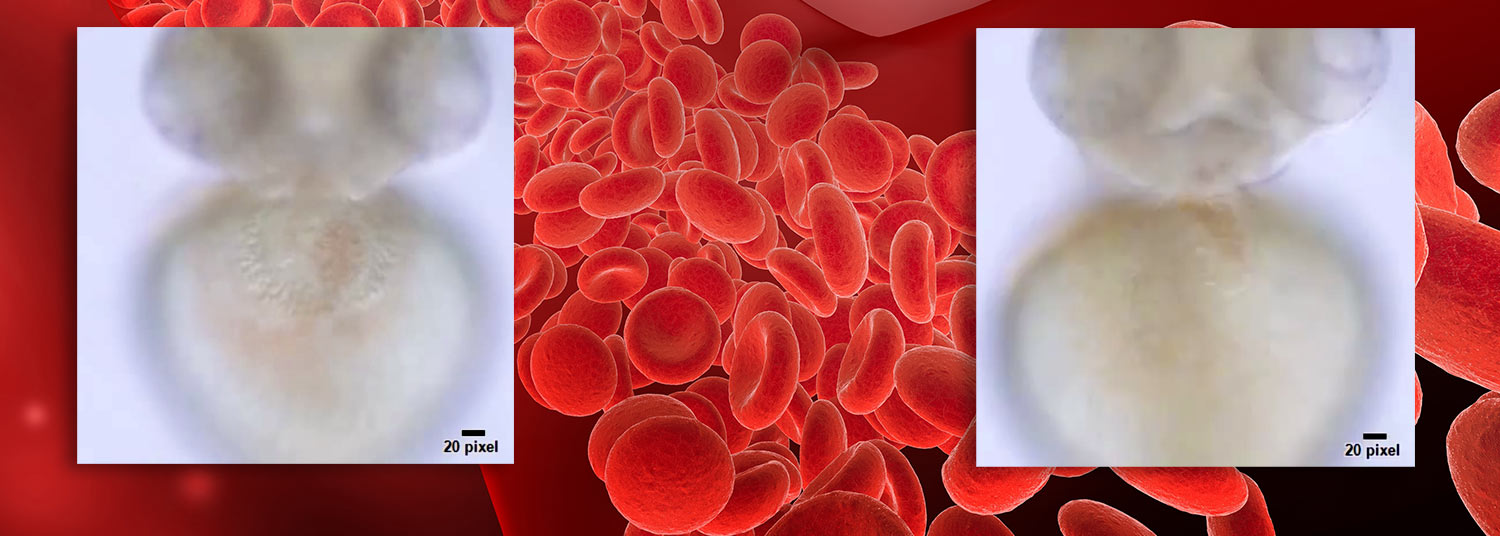December 15, 2023 | Deborah Kotz
Heme Protein Cytoglobin Found to Regulate Processes of Normal Organ Formation During First Weeks of Life in Embryo

The team, led by senior author Paola Corti, PhD, along with along with University of Maryland School of Medicine Dean Mark T. Gladwin, MD, as senior co-author, used CRISPR gene editing technologies to knock out the cytoglobin gene in zebrafish. The lack of cytoglobin caused the development of embryos with a mirrored heart, meaning the heart had a reversed left-right pattern. In humans, cytoglobin is involved in processes involving nitric oxide, a compound that helps regulate healthy blood flow to organs.
Dr. Gladwin, who is the John Z. and Akiko K. Bowers Distinguished Professor and Dean, UMSOM, and Vice President for Medical Affairs, University of Maryland, Baltimore, has been researching the effects of nitric oxide on blood vessels for more than 20 years including in this recent study finding.

To conduct the study, the research team knocked out the gene for cytoglobin in zebrafish and were amazed to see that it led to dramatic defects in the structure and location of organs in developing embryos. The heart, for example, was located on the right side of the fish instead of the left with a looping to the left instead of the right.
“We found that cytoglobin plays a vital role in the structure and function of tiny hair-like structures called cilia, which determine the asymmetry and proper development of organs,” said Dr. Corti, who is Assistant Professor of Biochemistry and Molecular Biology at UMSOM.
This is the first time cytoglobin – or any of the globin proteins like hemoglobin – has been found to be involved in fetal development and that a paucity could be linked to birth defects. It’s also the first time that cytoglobin has been linked to cilia function. Such a finding could open the door for the development of therapeutics for rare birth defects that affect the movement of cilia.
About 1 in every 10,000 to 30,000 people are born with Primary Ciliary Dykinesia (PCD), a rare disease that affects the cilia and can cause breathing issues from thickened mucus clogging airways. “Kartagener’s syndrome is a form of PCD and is known to cause the type of heart defects seen in the zebrafish where the heart is abnormally positioned to the right and rotated,” said Dr. Corti. “There is no cure for this condition, just surgery to fix any heart defects and treatments to manage symptoms.”

“We found the phenotype and connected the dots to cilia. In the presence of cytoglobin, we could track the function of the protein and how if led to proper cilia function and organ development. In the absence, we saw these defects,” said Elizabeth Rochon, PhD, first author of the study and Assistant Professor of Medicine at UMSOM.
Funding for the study was from the National Institutes of Health, the American Heart Association, and the Institute for Transfusion Medicine and the Hemophilia Center. UMSOM faculty co-authors include Anthony W. DeMartino, PhD, Assistant Professor of Medicine, and Qinzi Xu, MD, Assistant Professor of Medicine.
Other co-authors included faculty at the University of Pittsburgh School of Medicine and the University of Copenhagen in Denmark.
About the University of Maryland School of Medicine
Now in its third century, the University of Maryland School of Medicine was chartered in 1807 as the first public medical school in the United States. It continues today as one of the fastest growing, top-tier biomedical research enterprises in the world -- with 46 academic departments, centers, institutes, and programs, and a faculty of more than 3,000 physicians, scientists, and allied health professionals, including members of the National Academy of Medicine and the National Academy of Sciences, and a distinguished two-time winner of the Albert E. Lasker Award in Medical Research. With an operating budget of more than $1.2 billion, the School of Medicine works closely in partnership with the University of Maryland Medical Center and Medical System to provide research-intensive, academic, and clinically based care for nearly 2 million patients each year. The School of Medicine has more than $500 million in extramural funding, with most of its academic departments highly ranked among all medical schools in the nation in research funding. As one of the seven professional schools that make up the University of Maryland, Baltimore campus, the School of Medicine has a total population of nearly 9,000 faculty and staff, including 2,500 students, trainees, residents, and fellows. The School of Medicine, which ranks as the 8th highest among public medical schools in research productivity (according to the Association of American Medical Colleges profile) is an innovator in translational medicine, with 606 active patents and 52 start-up companies. In the latest U.S. News & World Report ranking of the Best Medical Schools, published in 2023, the UM School of Medicine is ranked #10 among the 92 public medical schools in the U.S., and in the top 16 percent (#32) of all 192 public and private U.S. medical schools. The School of Medicine works locally, nationally, and globally, with research and treatment facilities in 36 countries around the world. Visit medschool.umaryland.edu
Contact
Deborah Kotz
Senior Director of Media Relations
Office of Public Affairs & Communications
University of Maryland School of Medicine
DKotz@som.umaryland.edu
o: 410-706-4255
c: 617-898-7955
t: @debkotz2
Related stories

Friday, December 08, 2023
UM School of Medicine Mourns the Loss of Dynamic Researcher, Chair, World Traveler, Giuseppe Inesi, MD
The University of Maryland School of Medicine mourns the loss of a dynamic researcher and teacher, Giuseppe Inesi, MD. He passed away on November 12 in Tiburon, California of Alzheimer’s disease.

Monday, July 24, 2023
Structure of Opioid Receptors May Reveal How to Better Design Pain Relievers, Addiction Therapies
Opioids remain the most potent and effective pain relievers in medicine, but they’re also among the most addictive drugs that can halt a person’s ability to breathe during an overdose — which can be deadly. Researchers have been racing to develop safer pain reliever drugs that target a specific opioid receptor, called the kappa opioid receptor, that is only found in the central nervous system and not elsewhere in the body, like other opioid receptors. Previous research suggests that such drugs may not lead to addiction or death due to overdose, but the currently known drugs that target these kappa opioid receptors have their own set of unacceptable side effects, including depression and psychosis.

Tuesday, September 26, 2017
University of Maryland Medicine Receives Prestigious Award For Its Heart and Lung Resuscitation Program
A heart and lung resuscitation program at University of Maryland Medicine (UMM) has been recognized for its elite level of care by a leading group in the field.

Monday, September 11, 2017
New Study Shows Novel Collaborative Intensive Care Can Significantly Improve Treatment for Heart Patients – and Cut Costs
Researchers at the University of Maryland School of Medicine (UM SOM) have found that a new, collaborative treatment model for seriously ill heart patients with breathing difficulties results in better care and lower costs.

Wednesday, June 07, 2017
University of Maryland School of Medicine Researchers Identify Gene That May Play a Central Role in Heart Disease
Heart disease kills more than 600,000 Americans every year, which translates to more than one in every four deaths. Although lifestyle choices contribute to the disease, genetics play a major role. This genetic facet has remained largely mysterious. But new research by scientists at the University of Maryland School of Medicine (UM SOM) has identified what may be a key player: a mutated gene that leads to irregular heartbeat, which can lead to a dangerously inefficient heart.

Friday, May 05, 2017
Secondhand Smoke Ups Heart Disease in Unique Group of Female Nonsmokers – Amish Women
New research at the University of Maryland School of Medicine (UM SOM) has found that secondhand smoke tends to have somewhat different effects on men and women. The research, conducted in a Pennsylvania Amish community where virtually no women smoke, found that women who were exposed to secondhand smoke had a greater risk for cardiovascular disease, while men exposed to secondhand smoke tended to have a higher body mass index (BMI).

Wednesday, January 11, 2017
University of Maryland Medical Center Offers Genetic Testing as Standard of Care to Help Improve Outcomes for Heart Stent Patients
The University of Maryland Medical Center (UMMC) is now offering a simple genetic test to patients who receive heart stents to determine whether they have a genetic deficiency that affects how they respond to a common drug to prevent blood clots. Patients are typically given the medication, clopidogrel, to prevent cardiovascular events after having a stent placed in a coronary artery to treat a blockage.

Tuesday, December 20, 2016
First U.S. Babies Treated in Unique Study of Adult Stem Cell Therapy for Congenital Heart Disease
In a first-in-children randomized clinical study, medical researchers at the University of Maryland School of Medicine (UM SOM) and the Interdisciplinary Stem Cell Institute (ISCI) at the University of Miami Miller School of Medicine have begun testing to see whether adult stem cells derived from bone marrow benefit children with the congenital heart defect hypoplastic left heart syndrome (HLHS).

